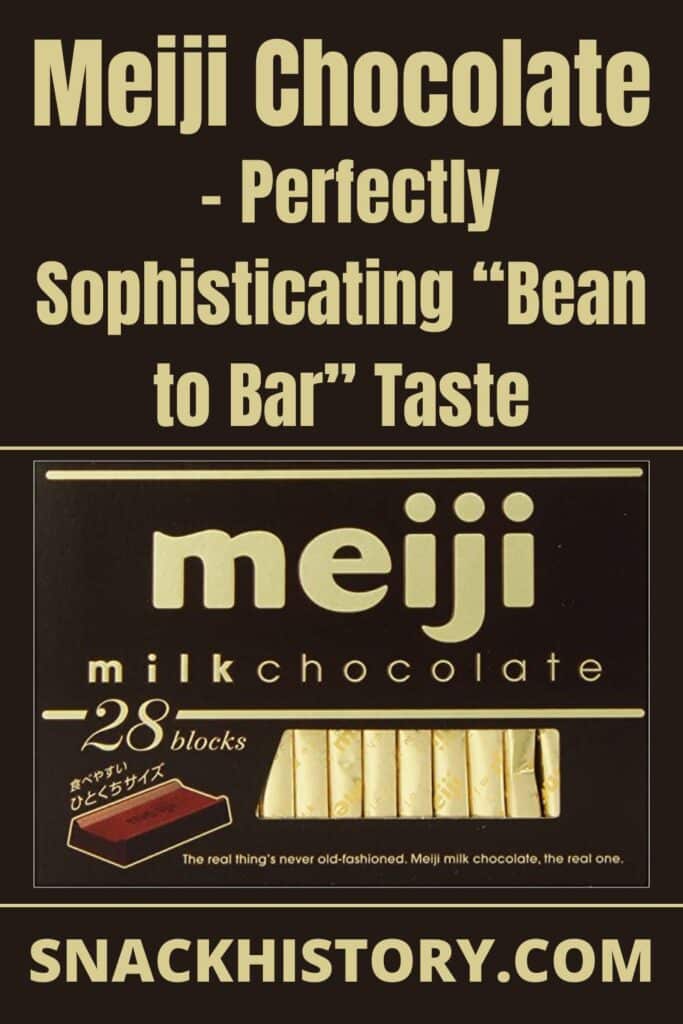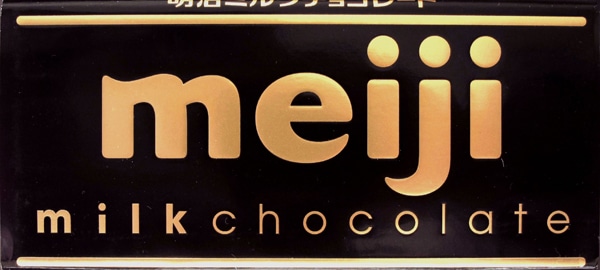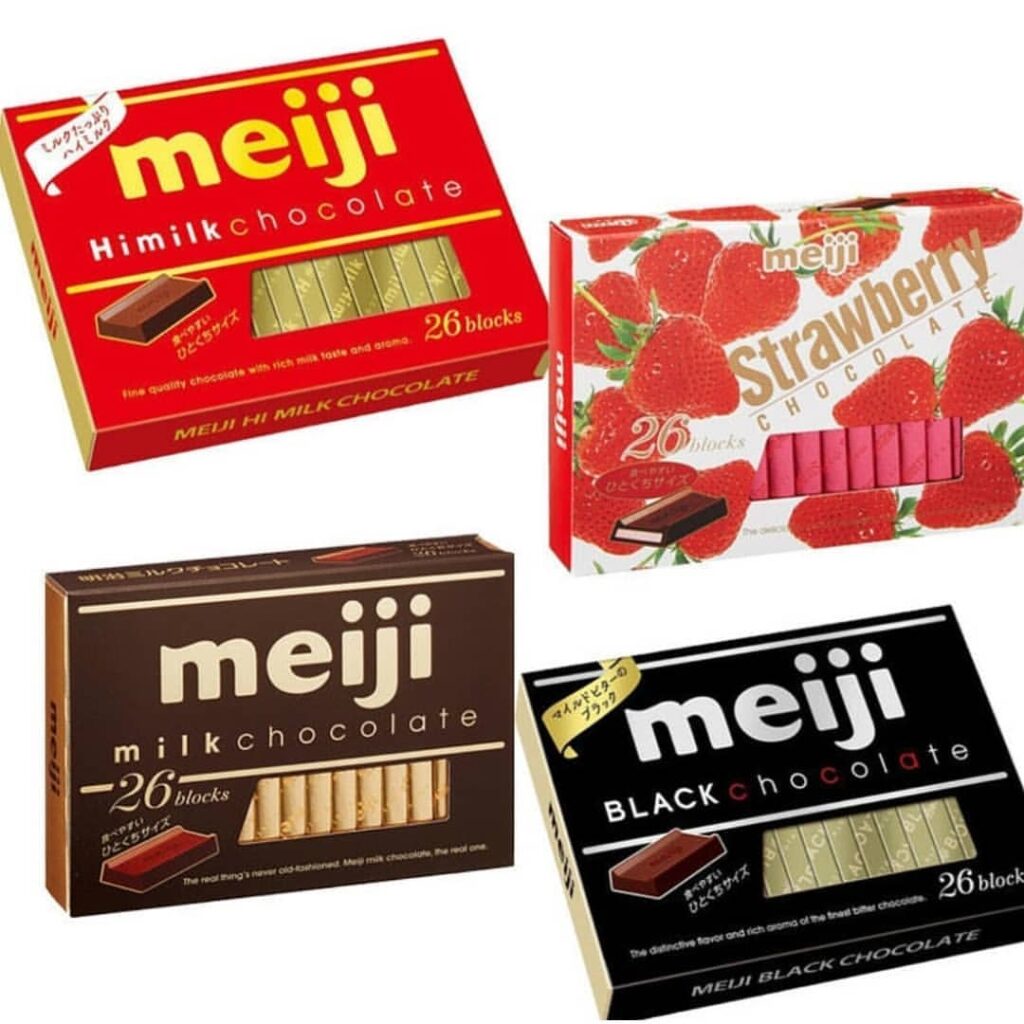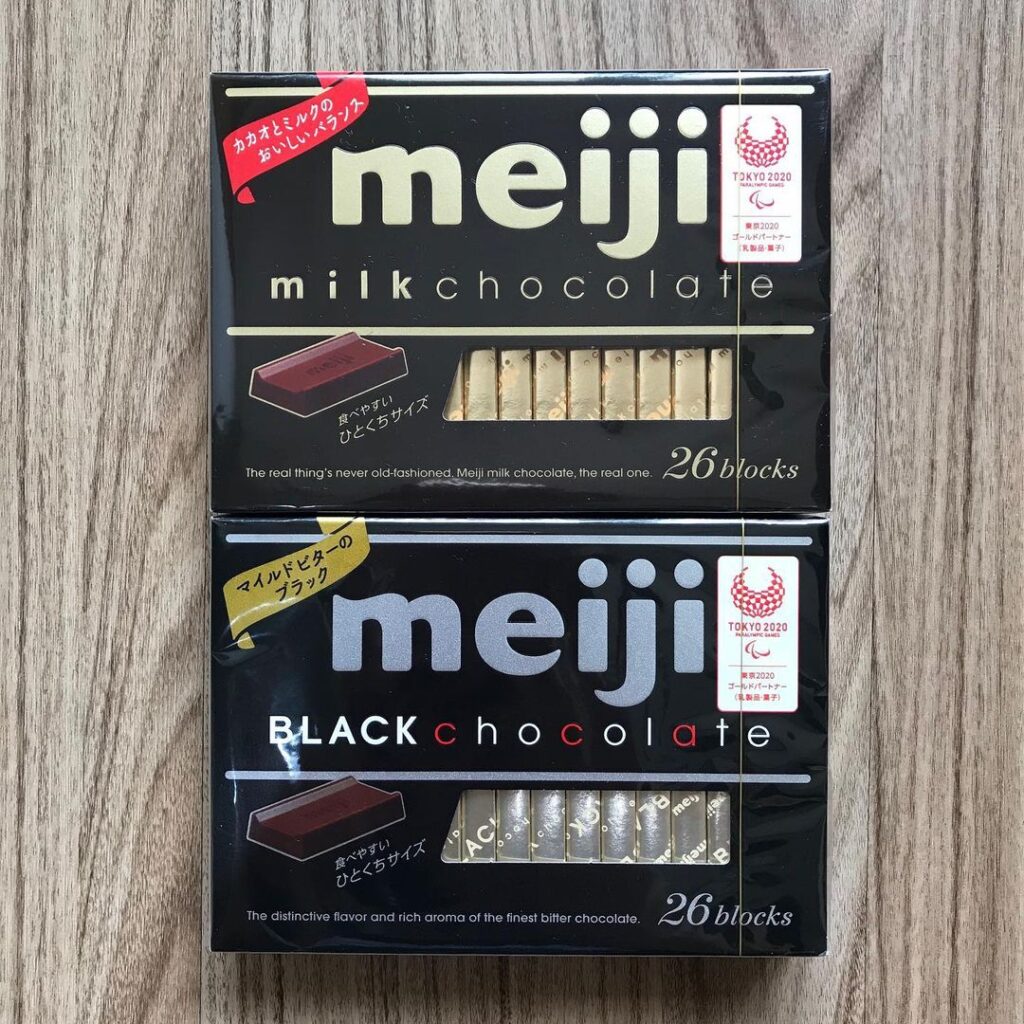Meiji Chocolate – Perfectly Sophisticating “Bean to Bar” Taste
In the past, sliced sugarcane was frequently offered for sale as a roadside snack that could be purchased by the bag and eaten while watching TV. However, you might not be aware that Taiwan’s sugar industry flourished during the period of Japanese colonization, which also saw the invention of the well-known Meiji chocolate.
Meiji, a candy business with roots in sugar processing, was established in 1916 and has been manufacturing the beloved and cherished Meiji Chocolate and other confectionery products. Let’s learn more about amazing and delectable Meiji Chocolate.
Please leave a review or any memories of this snack in the comments at the bottom of this page. Thank you!

History
Meiji Holdings Co. is the brand that creates Meiji Chocolate. In order to significantly improve the nutritional status of the Japanese people, Hanji Soma, the company’s founder, introduced the Meiji Chocolate Bar in 1926. The Meiji Chocolate Bar, a creation inspired by this goal and this same belief, has withstood the test of time. The Meiji Group has continued to follow Soma-aim Osama as its primary goal for every product it creates.
Meiji Chocolate quickly became a favorite among both adults and children throughout the world who adore chocolate once it reached the shelves of Japanese stores. As a result of the chocolate winning Gold and Silver Awards at the prestigious International Chocolate Awards and Superior Taste Awards from the Brussels International Taste and Quality Institute, its popularity was later recognized on a global scale.
The brand also provides Meiji White Chocolate, Meiji Strawberry Chocolate, Meiji Banana Chocolate, Meiji Rich Pistachio Chocolate, and several additional limited-edition kinds of chocolate. The firm has increased the number of goods in its chocolate line to roughly 130, which now includes a variety of chocolate and chocolate nibbles.
These delectable new products include a melty kiss, almond chocolate, Takenoko No Sato, and Kinoko No Yama. While it’s true that every Meiji Chocolate flavor available today is deserving of praise, it seems that only the Meiji Black Chocolates have managed to match the original.
It’s noted that Meiji chocolate has a strong cocoa taste and high-quality bitterness. After all, 86% of it is supposed to be dark chocolate. For people who don’t mind a little bitterness in their chocolates as long as they get to experience a delightful burst of flavors on their lips, its sophisticated taste makes it the ideal present.
How Meiji Chocolate Is Made
To start, Meiji goes through a rigorous quality assurance procedure on each component they utilize to make sure everything is in excellent condition. Meiji Chocolate bars are created by choosing the right cacao beans, then roasting and fermenting them for a prolonged period of time. This guarantees that the final result will be sweet, creamy, and smooth.
The cacao bean itself has a significant role in the success of the bars. “Bean-to-bar” is a key idea and crucial component of the strategy that made the bars a success, as it is stated on the label. The business ensures that the beans used to manufacture its chocolate are of the highest caliber.
Meiji works with foreign farmers directly to guarantee that they receive cocoa beans of the highest caliber. The business has been building partnerships with cocoa bean producers at their source for ten years, and they even help with the product’s cultivation.
The majority of businesses merely buy processed cacao beans, whereas Meiji staff members individually visit cacao estates abroad to look at the plants, get to know the locals, and examine equipment before processing. To maintain quality control, the beans are produced following Meiji’s guidelines, taste tests are conducted on both sides, and there is a steady channel of contact.
Meiji Chocolate made the decision to serve the market by writing the precise amount of cacao in each bar on the cover because the Japanese have developed a sophisticated palate for chocolate, much like they have for wine. Since dark chocolate’s health advantages are well recognized in Japan as well, the bars were effective in luring health-conscious chocolate fans.
Each container features a flavor chart on the reverse that diagrams the taste experience by nut, fruit, and floral aromas as well as flavor markers for bitterness, sweetness, milkiness, and acidity.
The packaging is only one example of attention to detail. The chocolate bits in the bars themselves include a variety of designs, some of which include a zig-zag part. When you eat the pieces, it gives them a distinct “mouthfeel” and a little different flavor.
Brief About Meiji Chocolate Manufacturer
The bulk of Taiwanese sugar businesses’ principal line of business during the Japanese colonial era was exporting raw sugar to Japan’s main islands. However, the ups and downs of the sugar sector had an impact on several sugar enterprises. They started to think about combining the upstream and downstream outputs. Meiji Sugar Manufacturing Co., Ltd., whose growth was influenced by Meiji Chocolate, was one of the first pioneers.
In 1906, Meiji Sugar Manufacturing Co., Ltd. was founded. Sma Hanji, the company’s president, had already visited Europe and the United States to learn more about the sugar business. He then moved to Taiwan as a result of the Russo-Japanese War. The Meiji Sugar Manufacturing Co., Ltd. prospered, which led to further corporate growth in the production of dairy and snack items.
Meiji Seika Co., Ltd. was founded in 1917 as a result of this. Its primary goods were split into two groups. The first category included soft beverages, and the second category was snacks, including Meiji chocolate, Yogan, fudge, and other goods.
Dairy items, such as Meiji milk, butter, cheese, ice cream, condensed milk, and more, came afterward. These goods are still readily accessible today, with Meiji chocolate standing out as one of the most emblematic.
Meiji Chocolate Jar as National Museum Exponent
To draw kids, Meiji Chocolate started a campaign including a kanji card collection. Tân-bûn, a local citizen of Giran County, loved Meiji chocolate. He was a product of the Japanese colonial era and came from an affluent family. In Giran County, his father, Tân Thóo-Kim, was a renowned practitioner of Western medicine.
With this family history, he had little trouble getting some Meiji chocolate. Tân later recalled that he really liked eating Meiji chocolate at the time. Each box had a kanji card that was concealed. You may have earned a free chocolate bar if you gathered five distinct kanji cards. Amusingly, one card would inevitably be missing during the process, making it impossible to gather all of them.
Many individuals at the time also considered the outside container to be a collector’s item in addition to the chocolate bars. A glass candy and biscuit jar from the Meiji Seika Co., Ltd. is part of the collection of the National Museum of Taiwan History.
Rise Of Meiji Chocolate
Meiji produced a gourmet chocolate bar for the second time in 2016; the first effort was in 2014, but the product failed to catch on. One of the reasons was that the chocolates weren’t particularly complicated or intriguing due to a lack of exploration and diversity. This time, the business adopted a fresh strategy and offered a range of distinctive flavors, some of which the ordinary Japanese consumer was unfamiliar with.
Typically, Japanese chocolate bars are packaged sideways. However, Meiji broke this tradition by packaging its chocolate bars upright instead of the typical sideways, with a picture of the chocolate on the exterior. The chocolate comes in a variety of flavors, and each box has a unique design and color. However, all of them have a metallic cacao bean on the front.
Meiji, a Japanese candy and snack company, had an unanticipated success in supermarkets and convenience stores in 2017 with a new line of upscale chocolate bars. The chocolate bars were given the moniker “Meiji THE chocolate” due to their tasteful yet understated style and carefully selected contents.
The eight flavors that are now available are Comfort Bitter, Elegant Bitter, Brilliant Milk, Sunny Milk, Vivid Milk, Velvet Milk, Matcha (green tea), and Framboise. Red wine might be a great match for the Elegant Bitter.
The contents and raw materials are listed on the box as well. A lot of people posted pictures of the chocolate bar boxes on Instagram because the packaging was the ideal marketing strategy for Japan, which is growing fond of the social media platform. Fans altered the boxes to become bookmarks, which they then shared on social media.
When the chocolate bars were introduced in September 2016, many individuals in the candy business were skeptical that they would be a success. They are offered for roughly twice as much as typical chocolate bars, generally around 220 yen ($1.90). However, according to Meiji, they sold 30 million bars in a year. According to Toyo Keizai, ten million bars are regarded as a successful launch in Japan’s chocolate sector each year; twenty million bars are considered a hit.
Logo

Ingredients
- Sugar
- Cacao Mass
- Whole Powdered Milk
- Cocoa Butter
- Lecithin (Soybean-derived)
- Flavor
Nutrition
| Serving Size: | 1 oz. (28.6g) | % Daily Value* |
| Amount Per Serving | ||
| Calories | 171.4 | |
| Calories from Fat | 102.9 | |
| Total Fat | 11.4g | 18% |
| Saturated Fat | 0g | 0% |
| Trans Fat | 0g | |
| Cholesterol | 0mg | 0% |
| Sodium | 28.6mg | 1% |
| Total Carbohydrates | 17.1g | 6% |
| Dietary Fiber | 0g | 0% |
| Sugars | 17.1g | |
| Protein | 2.9g | |
| Vitamin A | 0% | |
| Vitamin C | 0% | |
| Calcium | 0% | |
| Iron | 0% |
- Percent Daily Values are based on a 2000-calorie diet.
Pictures


Commercials
Bottom Line
In essence, each bar of Meiji Chocolate may be savored similarly to a glass of wine. Meiji has remained a leading producer of Japanese snacks and confections ever since its founding in 1916. These chocolates have been enticing people for more than a century, even those living outside of the nation where they were first produced. All in all, we can say that Meiji Chocolate appears to have made an everlasting impression on its customers worldwide.

Nato is a content writer and researcher with a background in psychology. She’s passionate about writing about the candy industry and exploring the cultural significance of sweets and treats. She believes that the stories behind our favorite snacks can reveal a great deal about our values.
Please leave a review or any memories of this snack in the comments below. Thank you!
Click here for a full A-Z list of Snacks and Candy
